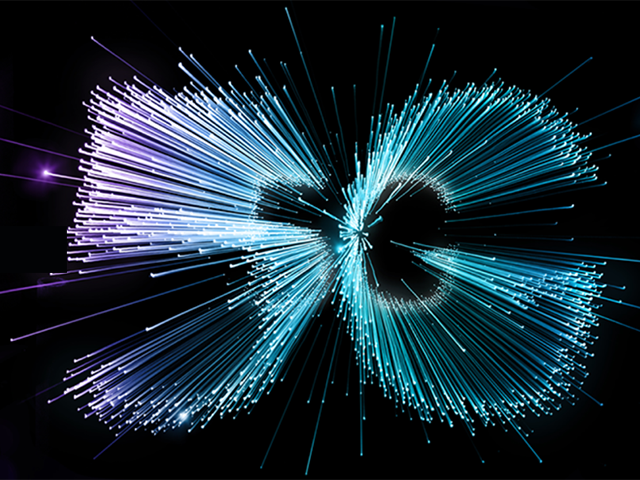Image credit: EHT Collaboration
In 2019, the Event Horizon Telescope (EHT) team revealed the first photograph of a black hole. That black hole is located at the center of Messier 87 (M87) galaxy and is 55 million light-years from Earth. The EHT, a radio telescope array, has now photographed a much closer black hole, Sagittarius A * (Sgr A *), that exists at the center of the Milky Way. The two black holes look remarkably similar, although they are dramatically different sizes and are surrounded by different types of galaxies. M87 is an elliptical galaxy, whereas the Milky Way is a spiral galaxy.
The Event Horizon Telescope Collaboration, a global research team, linked eight radio telescopes on Earth to create a virtual, Earth-sized telescope. Despite being much closer to Earth – about 27,000 light-years – Sagittarius A * proved much more challenging to photograph. ‘The gas in the vicinity of the black holes moves at the same speed – nearly as fast as light – around both Sgr A * and M87 *. But where gas takes days to weeks to orbit the larger M87 *, in the much smaller Sgr A * it completes an orbit in mere minutes. This means the brightness and pattern of the gas around Sgr A * was changing rapidly as the EHT Collaboration was observing it – a bit like trying to take a clear picture of a puppy quickly chasing its tail, ‘explains EHT scientist Chi-kwan (‘ CK ‘) Chan, from the Steward Observatory and the Department of Astronomy and the Data Science Institute of the University of Arizona.
Scientists developed new tools to account for the gas around Sgr A *. M87’s supermassive black hole, M87 *, was an easier target. Nearly all images that the EHT captured of M87 * looked similar. That’s not the case with Sgr A *. The image above is an average of different frames captured over multiple nights. The image of Sgr A * is the culmination of five years of work by the more than 300 researchers from 80 institutes worldwide that comprise the EHT Collaboration team.
When viewed from Earth, Sgr A * is very small in the sky. It’s like trying to look at a donut on the moon’s surface. Plus, it’s invisible because it’s completely dark. However, the glowing gas surrounding Sgr A * belies its true nature. EHT writes“Although we cannot see the black hole itself, because it is completely dark, glowing gas around it reveals a telltale signature: a dark central region (called a ‘shadow’) surrounded by a bright ring-like structure. The new view captures light bent by the powerful gravity of the black hole, which is four million times more massive than our Sun. “
 |
| ‘The Event Horizon Telescope (EHT) Collaboration has created a single image (top frame) of the supermassive black hole at the center of our galaxy, called Sagittarius A * (or Sgr A * for short), by combining images extracted from the EHT observations. ‘
‘The main image was produced by averaging together thousands of images created using different computational methods – all of which accurately fit the EHT data. This averaged image retains features more commonly seen in the varied images, and suppresses features that appear infrequently. ‘ ‘The images can also be clustered into four groups based on similar features. An averaged, representative image for each of the four clusters is shown in the bottom row. Three of the clusters show a ring structure but, with differently distributed brightness around the ring. The fourth cluster contains images that also fit the data but do not appear ring-like. ‘ ‘The bar graphs show the relative number of images belonging to each cluster. Thousands of images fell into each of the first three clusters, while the fourth and smallest cluster contains only hundreds of images. The heights of the bars indicate the relative ‘weights,’ or contributions, of each cluster to the averaged image at the top. ‘ Credit: EHT Collaboration. Click here to see the full-resolution version. |
The image has long been anticipated by scientists who believed there must be a supermassive black hole at the center of our galaxy. We now have the first visual evidence for its existence. The image and data will help further our understanding of how supermassive black holes work, especially when compared to the earlier image of M87 *. ‘We have two completely different types of galaxies and two very different black hole masses, but close to the edge of these black holes they look amazingly similar,’ says Sera Markoff, Co-Chair of the EHT Science Council and a professor of theoretical astrophysics. at the University of Amsterdam, the Netherlands. ‘This tells us that General Relativity governs these objects up close, and any differences we see further away must be due to differences in the material that surrounds the black holes.’
Understanding how gas behaves around supermassive black holes is not yet fully understood, but it may hold answers to the pressing questions about how galaxies form and evolve. ‘Now we can study the differences between these two supermassive black holes to gain valuable new clues about how this important process works,’ said EHT scientist Keiichi Asada from the Institute of Astronomy and Astrophysics, Academia Sinica, Taipei. ‘We have images for two black holes – one at the large end and one at the small end of supermassive black holes in the Universe – so we can go a lot further in testing how gravity behaves in these extreme environments than ever before.’













